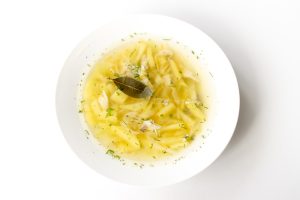
Unlocking the full potential of a mango’s delectable flavor begins with knowing how to tell if it’s ripe. Navigating the nuances of color, firmness, aroma, shape, and skin texture can be the key to a perfect mango experience. From the vibrant golden hues of an ‘Alphonso’ to the subtle give at the stem end, each indicator plays a crucial role.
This guide not only demystifies the art of assessing ripeness but also offers insights into optimal usage, storage guidelines, and handling practices. Whether you’re savoring it fresh, slicing it for salads, blending it into smoothies, or concocting mango sorbets and salsas, understanding when a mango is ripe ensures a tropical indulgence like no other.
Key Takeaways
- Ripeness Indicators: Assess mango ripeness using a combination of color, firmness, aroma, shape, and skin texture.
- Optimal Usage: Enjoy ripe mangoes fresh, sliced, and cubed, in smoothies, sorbets, salsas, lassis, salads, or desserts.
- Storage Guidelines: Store unripe mangoes at room temperature; consume ripe ones within 2-4 days or refrigerate for extended freshness.
- Storage Best Practices: Refrigerate mangoes but allow them to return to room temperature before eating for the best flavor and juiciness.
- Handle with Care: Avoid bruising, handle mangoes gently, and store them away from strong-smelling foods to maintain quality.
- Consider Mango Variety: Different varieties have distinct ripening characteristics, so be aware of the specific indicators for the mango type you have.
- Support Sustainable Practices: Choose ethically sourced mangoes, support local farmers, and raise awareness about mango ripeness indicators for a more enjoyable experience.
When is a Mango Ripe and Ready to Eat?
A mango is ripe and ready to be eaten when it exhibits a combination of visual, aromatic, and tactile indicators. Here’s a concise guide to help you determine the optimal ripeness:
1. Color:
- Mango varieties have distinct color changes as they ripen. For example, when ripe, the popular ‘Alphonso’ mango transforms from green to a rich golden yellow.
- Look for uniform color distribution, avoiding green patches, which may indicate unripeness.
- Some varieties, like ‘Keitt,’ may remain green even when ripe, so rely on other indicators for confirmation.
2. Firmness:
- Unripe mangoes have a hard texture, lacking the subtle give that indicates ripeness.
- Gently squeeze the mango at the stem end; a ripe mango should yield slightly without being too soft.
- Overripe mangoes can feel mushy or have areas of excessive softness, signaling potential spoilage.
3. Aroma:
- The aroma of a ripe mango is a result of ethylene gas production during ripening.
- Hold the mango near your nose, paying attention to the stem end. A sweet, fruity fragrance suggests ripeness.
- A strong, unpleasant odor may indicate overripeness or spoilage, so be cautious.
4. Shape and Size:
- Ripe mangoes typically have a full, rounded shape, showcasing plumpness and juiciness.
- Larger-than-average size is a good indicator of ripeness, but it can vary by variety.
- Avoid irregularly shaped mangoes, as they may indicate improper ripening or other issues.
5. Skin Texture:
- A ripe mango’s skin is often smoother and slightly waxy, indicating a well-hydrated fruit.
- Excessive blemishes, wrinkles, or soft spots may suggest decay, disease, or improper handling.
- Note that some varieties have naturally bumpy skins, so focus on overall texture and uniformity.
My Mango is Ripe. What should I do next?
- Eat it Fresh: The simplest and most classic way to enjoy a ripe mango is to eat it fresh. Peel the skin away or scoop out the flesh, and enjoy the succulent, sweet fruit as it is.
- Mango Slices: Slice the mango into thin, even pieces. You can enjoy these slices or add them to fruit salads for a burst of natural sweetness.
- Mango Cubes: Cut the mango into cubes for a convenient and bite-sized snack. These cubes can be enjoyed on their own, added to yogurt, or used as a topping for ice cream.
- Mango Smoothie: Blend ripe mango chunks with yogurt, ice, and a splash of your favorite juice to create a refreshing mango smoothie. Customize it by adding other fruits like bananas or berries.
- Mango Sorbet: Puree ripe mango with a touch of honey and freeze the mixture to make homemade mango sorbet. It’s a delightful and healthier alternative to store-bought desserts.
- Mango Salsa: Combine diced mango with red onion, cilantro, lime juice, and a pinch of salt to create a vibrant mango salsa. This versatile condiment pairs well with grilled chicken, fish, or as a dip for tortilla chips.
- Mango Margarita: Add fresh or frozen mango chunks to the mix for a tropical flavor margarita.
- Mango Lassi: Blend ripe mango with yogurt, a bit of milk, and a dash of cardamom to make a delicious mango lassi, a popular Indian yogurt-based drink.
- Mango Salad: Mix mango chunks with greens, cucumber, avocado, and a light vinaigrette for a refreshing and flavorful mango salad.
- Mango Desserts: Incorporate ripe mango into desserts like mango cheesecake, mango mousse, or mango ice cream for a delightful and tropical twist.
Also Read: 15 Unconventional Smoothie Recipes for a Refreshing Energy Boost
How Long Do Mangoes Last?
Best Practices
- Check the Stem End: Look at the stem end of the mango. A sweet aroma and a slight give when pressed indicate ripeness. If it smells sour, the mango may not be fully ripe.
- Avoid Bruising: Handle mangoes with care to prevent bruising. Bruised areas can accelerate spoilage and affect the overall quality of the fruit.
- Ripen Naturally: Allow mangoes to ripen naturally whenever possible. Avoid using artificial ripening agents, as they may compromise the taste and texture.
- Inspect for Pests: Before purchasing, inspect mangoes for signs of pests or damage. This ensures that you bring home high-quality, pest-free fruit.
- Store Separately: Keep mangoes away from strong-smelling foods in the fridge. Mangoes can absorb odors, affecting their taste.
- Avoid Refrigerating Unripe Mangoes: Refrigerating unripe mangoes before they reach optimal ripeness can negatively impact their flavor and texture. Allow them to ripen at room temperature first.
- Explore Diverse Recipes: Venture beyond common recipes and explore global cuisines that feature mango as a key ingredient. This expands your culinary repertoire and introduces you to new and exciting flavors.
- Support Local Farmers: Purchase mangoes from local farmers or markets to support local agriculture. Locally sourced mangoes are often fresher and contribute to the community’s economy.
Final Thoughts
Mastering the art of identifying a ripe mango requires a combination of these key indicators. Color, firmness, aroma, shape, skin texture, and the “give” test are all valuable tools to pick the perfect mango for your next culinary adventure. By paying attention to these factors, you can relish the exquisite taste and texture of a ripe mango, making your tropical indulgence all the more enjoyable.
Also Read: Is Your Mango Truly Natural? 10 Ways to Find Out Chemical Ripening
FAQs
- Q: How can I tell if a mango is ripe?
- A: Check for a uniform golden-yellow color, slightly yielding firmness, a sweet aroma near the stem, a fully rounded shape, and smooth, slightly waxy skin.
- Q: Can I refrigerate mangoes?
- A: Yes, refrigeration extends the shelf life, but bring them back to room temperature before eating for the best flavor and juiciness.
- Q: How long do cut mangoes last?
- A: Refrigerate cut mangoes in an airtight container and consume them within 2 to 3 days.
- Q: Can I accelerate mango ripening?
- A: Yes, place unripe mangoes in a paper bag at room temperature to speed up the ripening process.
- Q: Are irregularly shaped mangoes safe to eat?
- A: Irregular shapes may indicate improper ripening or other issues, so it’s best to choose mangoes with a full, rounded shape.
#MangoRipeness #TropicalDelight #PerfectMango #FruityIndulgence #MangoMasterclass #RipeAndReady #MangoRecipes #FreshMango #MangoMagic #SustainableEating #FarmToFork #MangoSensation #JuicyGoodness #EthicalConsumption #RipeMangoGuide







No comment yet, add your voice below!